Text
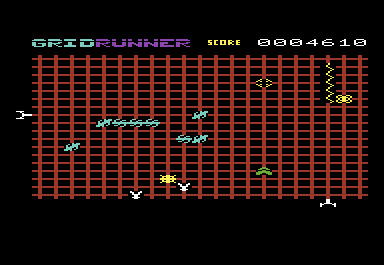
Gridrunner (VIC-20, C64, Atari 8-Bit)
This post, in which I write about the three (original) versions of Gridrunner included in Llamasoft: The Jeff Minter Story is for subscribers only! You can subscribe for just $1 a month at https://ko-fi.com/mathewkumar, but if you don’t fancy that, you can read or re-read my review of the release as a whole. And don’t forget there’s years of articles in our archive, and physical issues of exp. 2601 are still available for pre-order until the end of the month.
#gaming#video games#games#txt#text#review#nintendo#nintendo switch#llamasoft#gridrunner#vic-20#c64#atari 8-bit
1 note
·
View note
Text


Gradius (NES)
Developed/Published by: Konami
Released: 25/04/1986
Completed: 14/02/2024
Completion: Finished it, fake 1CC (saving at the start of each level.)
Stop! Before you read this, you should know that this is the LAST WEEK to order a physical exp. 2601 from my ko-fi shop before it goes off-sale. Remember, subscribers, get 35% off instantly, and it's just $1 per month to support my work!
So as advised by me in 2023, you (in 1986) have chosen to save your christmas money and not buy the (honestly good!) Famicom port of Twinbee and instead wait for Gradius, because Gradius is better than Twinbee and Konami have already proven they can nail an NES port. Have you been rewarded?
Have you ever. In fact, I can’t get over how good Famicom owners were eating in 1986 already (well, if they were savvy with their purchases, anyway) considering how spotty really stand-out releases have been to this point. Sure, this port is far from arcade perfect, but it still feels like you’ve got Gradius at home, and there’s a giddy joy to that even if in 2024 I could have just, you know, booted up the arcade original.
The issues are clear: there’s a graphical downgrade with a bit of flicker. You can only have two options (boo!) and the laser weapon isn’t one long beam (boo!!!) so it just seems sort of wrong. Levels that used to have some vertical scrolling have none, and the famous laser cage never shows up either.
But… it doesn’t really matter, because it feels exactly like Gradius anyway. Yep, you start too slow and dying at the wrong point can lead to a unavoidable death spiral, but they’ve cleverly made this a bit more accessible for the home audience by including some warps (Super Mario Bros. strikes again!) and the famous Konami code (which you enter here while paused to get a fully upgraded ship). The code doesn’t feel that much like cheating considering that in the arcade "Nemesis" version, the game gives you basically a full upgrade worth of power-ups every time you die. What seems to be a slight reduction in difficulty–and definitely removing vertical scrolling–makes this a touch easier and honestly a bit more pleasant than the arcade original, so much so that I had loads of fun trying to 1CC this.
It’s probably not an essential cart, but when I think about making a shelf of Famicom games, Xevious is on there and this is being put next to it, so..
Will I ever play it again? I’ve still got the PC-Engine version to play!.
Final Thought: It’s literally only in the last couple of days that I’ve thought that “Gradius” is just a mis-translation of gladius (a Roman sword.) It’s better this way.
Hi. Thank you so much for being a supporter. I'd like to ask you for one more favour--could you check out the fundraiser my best friend Steven is running to help cover travel insurance costs? I know there are so many deserving causes, but Steven has a stage 4 brain tumour and it would mean the world to me if you considered donating, or sharing his page, to help make his remaining time the best ever.
1 note
·
View note
Text
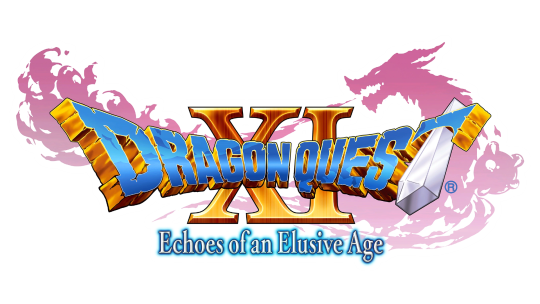
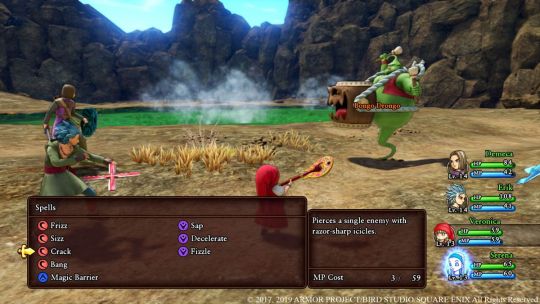
Dragon Quest XI: Echoes Of An Elusive Age (Definitive Edition)
Developed/Published by: Square Enix
Released: 27/09/2019
Completed: 14/02/2024
Completion: Finished the main story then defeated the true final boss in the post-game.
Well, where to start with Dragon Quest XI? I actually “finished” this before I even played through Shin Megami Tensei: Strange Journey (and not long before–I can’t believe I did two lengthy Japanese RPGs in such quick succession) but the thing about Dragon Quest XI is is that it makes it immediately clear when you finish it that it’s not really the ending and you have to do the post-game to truly finish it. So I thought “oh, well, I’ll put it down for a while and play some other stuff and come back to it.”
That (obviously) meant I put it down for a year and after Strange Journey every time I thought about picking up another RPG I’d think “oh, but I haven’t really finished Dragon Quest XI…”
So with Persona 3 Reload and that out now I thought I better rip the band-aid off.
The band-aid could probably have stayed on?
Here’s the thing about Dragon Quest XI: It’s fine! It’s fine. It’s just… I never found it that interesting. I remember loving Dragon Quest IX, but here I could just feel the structure immediately and nothing exciting enough happens narratively that I became engaged. It’s the classic story: you’re the chosen one (snooze). You’ve got to collect X things from different parts of the world to defeat the big baddie (snooze). Every location you visit has a wee story chain/quest that involves you visiting the local dungeon, killing the local problem, and fixing the local situation.
It’s all… fine. The game is a bit too forgiving in that it’s super easy to avoid enemies so I think they accidentally broke the pacing, and in turn the character development is so expansive and complex that it’s just too much, with every character ending up with this huge list of spells and abilities that you end up using about 3 of (this is especially annoying when you come back for the post-game and discover you need to re-equip and respec your entire team because you’ve gone back in time and blah blah this blah blah that.)
Even if I loved the narrative and the play (and listen: I do like myself a turn-based battle from time to time, and I imagine the end-of-act 1 twist worked for some) Dragon Quest XI does the same thing I get annoyed at, say, Monster Hunter for: they keep just enough legacy interface to make doing things annoying.
There’s absolutely no reason that there’s both a menu on start that includes some things you use all the time (like your forge, or your mounts) but also a menu on a totally different button that has a bunch of stuff you use all the time as well (including quitting to the main menu, which is nested under “misc.”). And then you have things like an “Items” option and an “Equipment” option, and you can only easily see the equipment in your equipment bag from the… Items option. And character still have to be equipped with items before battles, which takes forever and every item is held individually (they do at least let you instantly put all non-essential items back in the item bag rather than have to remove them one at a time, but it’s still an almighty ball-ache.)
The game is full of these little niggles; things that are probably second nature to people who have been with the series since the beginning, but decidedly unenjoyable for those of us who aren’t. It could all just be a little more streamlined.
The thing is though is that it’s pretty obvious that Dragon Quest is a “if you like this sort of thing, you’ll like this sort of thing”, er, thing, and I think if you are someone who likes levelling up pre-existing characters, or like avoiding enemies and trying to farm metal slimes, doesn’t mind the interface or just are cool with yet another chosen one plot because you get to do those things, then Dragon Quest IX is pretty great! It looks good, there’s always forward momentum, and Eric from Two Doors Down voices your grandpa. Can’t really say fairer than that.
Will I ever play it again? No.
Final Thought: I should recount, however, something very funny. The post-game of Dragon Quest XI takes the plot in a weird, time-travelly direction that doesn’t make a ton of sense without you putting in a lot of work (“er, timelines can only exist if there’s a luminary… so the first timeline is absorbed into the second, but the third one is actually a loop…”) but offers a sort of open-world, “second quest” experience where you can go anywhere and fight all the bosses again but they’re much harder.
However you really only have to fight three, two who you fight basically immediately and then a third you can put off for as long as you like, meaning that the most efficient way to do the post-game (if you just want to see the credits) is to just farm metal slimes for a while and then beat the boss…
(Which actually raises another thing about Dragon Quest XI that annoyed me. You go back in time and because the protagonist is by tradition silent, he doesn’t explain anything to anyone. Meaning that there’s an entire sequence where he knows someone is a baddie, but just hangs out with them and relies on a different baddie stopping that baddie? I mean he just goes to sleep leaving the important mcguffin that destroyed the world in the previous timeline out??? And don’t get me started on the ultimate bad guy appearing and then just… hanging out in the sky doing nothing. Like what, was he ever going to do anything? What was he waiting for???)
…Wait, let me get to the funny thing. So I spent quite a while playing the post-game because misunderstood something I’d read. I believe that you needed the “Supreme Sword of Light” to make fighting the final boss not impossible, which is a weapon with a fairly complicated, specific plot-chain to unlock. Once I’d got it, I got into the final battle and it didn’t work.
Turns out you actually need the “Super Sword of Light” which you already have in your inventory to begin with.
I guess that’s what I get for skimming FAQs as soon as I get stuck…
Hi. If you’ve been following this tumblr, you will be familar that I usually try and drive to towards my ko-fi after every article. However, I would instead like to ask you for a favour–could you check out the fundraiser my best friend Steven is running to help cover travel insurance costs? I know there are so many deserving causes, but Steven has a stage 4 brain tumour and it would mean the world to me if you considered donating, or sharing his page, to help make his remaining time the best ever.
#gaming#video games#games#txt#text#review#nintendo#nintendo switch#dragon quest#dragon quest xi#dragon quest xi: echoes of an elusive age#square enix#2019
3 notes
·
View notes
Text

Mighty Bomb Jack
Developed/Published by: Tecmo
Released: 17/04/1986
Completed: 04/02/2024
Completion: Finished it with the standard ending and then used the Switch Online SP version to see the “best” ending.
There’s a few games out there that I categorise as “chippy” video games. Cabal. Robocop. Bomb Jack! Arcade games that would be in a beat-up, generic cabinet in the chip shop. A machine where you could barely see the screen for the ambient grease–plus the monitor is dull and burnt out anyway.
Do I view these games as such because specifically I remember seeing them in the chippy in my youth, not because Tecmo, Data East or Tecmo were all in on the chip shop industry? Of course. But Bomb Jack’s such a great example of a “chippy” video game anyway. It’s not the kind of game that’s going to draw a crowd in the arcade. It’s sort of off, visually, and in play. But if you’re waiting for them to do you a fritter, you’re going to put a 20p in anyway.
So what’s weird about Bomb Jack? It’s a single screen platform game, but it’s all about air control. Bomb Jack doesn’t just have a wee jump, he’s got this massive, drifty leap, and you control it by directing him with the joystick: up makes him jump higher, pushing down makes him fall faster. You’re trying to collect all the bombs on each stage, but preferrably in order--you always want to collect the next lit one. While you’re avoiding enemies of course, which is really what makes it so weird–you’re in this weird middle ground of not quite flying but trying to float and drift around the enemies that are seeking you. It’s like Pac-Man–you’re trying to nail your perfect route–but much messier. Less predictable.
Honestly, I sort of like Bomb Jack. I don’t think it’s a game you ever quite get comfortable playing–other jump styles are so much more ingrained–but there’s a pleasure to trying to execute your routes anyway.
Mighty Bomb Jack, however. Mighty Bomb Jack isn’t just Bomb Jack on the NES/Famicom, because it’s 1986, and while that might have flown before Super Mario Bros. (and it did: ports were massively successful on home computers in the UK) it’s just not going to cut it with savvy Famicom players. So Tecmo did what any sensible developer would do: they turned Bomb Jack into a platform game with scrolling levels, and then because that wasn’t enough, they made sure it was full of weird Tower of Druaga-esque secrets and warps. And for good nature, they kept in some single screen Bomb Jack levels because, well, it’s Bomb Jack.
The issue with Mighty Bomb Jack is immediately apparent. Bomb Jack’s big, drifty leap makes for a very strange feeling platform game where you have to like… go right. Enemies act just like they do in the original, too, meaning that you really just want to jump and drift them off screen immediately lest they seek you. Which actually makes most of the game sort of trivial because the levels are all short and once you know the pathing it’s all about getting through them as quick as possible. The warp system is also probably one of the most easily understood you can imagine (no Atlantis No Nazo confusion here) as you simply have to pick up the lit bomb last on each single-screen stage for it to skip you forward a full level. I’m not 100% sure this was as (originally) intended, because it would surely make more sense for you to be rewarded with a level skip for collecting every bomb in order, but it works because that’s still hard to do and if you skip a levels and die, you go back to the level you started skipping from. So there’s an interesting risk/reward there: you can choose to skip some levels, then purposefully not warp before an easier level to “save” your place if you think you might die later–or just use it to skip to how far you got in the game before.
Though I’m making it sound like a bit of a walkover, to avoid this there’s all that Tower of Druaga-type stuff. Levels are packed full of secrets that require you to jump in the correct place, or at the correct time, or multiple times, to make things appear. There are secret warps, secret treasure rooms, and you can’t beat the game with the “best” ending by warping there; you have to collect two crystal balls and 5 secret coins that (like all of these games) basically require you have prior knowledge to find. One of the most interesting things about Mighty Bomb Jack, actually, is there’s a completely obscure performance ranking known as “Game Deviation Value” and you can’t be too greedy because if you ever collect too many power-ups, you’re immediately sent to a “Torture Room” where you have to jump 50 times while avoiding enemies, just to go back to playing the game with all your power-ups removed!
Until you get to the very end–a punishing gauntlet of single screen challenges that throw you back to an earlier zone where you have to perform a challenging dance just to find a secret to get to the ending–Mighty Bomb Jack isn’t really that hard. It’s just very complicated. I haven’t even tried to explain here the system of powering up into different coloured Bomb Jacks because I’ve played all the way through this and I still don’t entirely understand it. This is a really good example of a team trying to hit the zeitgeist and overegging it entirely; but to be fair, if they’d just ported Bomb Jack instead even I’d be saying “well it’s just Bomb Jack, innit.”
Of course, when I played this, I abused the warping so I just played the single screen Bomb Jack levels mostly because I like those best. You cannae win.
Will I ever play it again? Switch Online is a bit unusual as it often puts up “versions” of games that are just essentially save states to the ending/second loop or whatever, and while some are pointless, I rather like that here they put out a “High Deviation Value!” version where you are right at the horrible ending gauntlet with everything required to get the best ending. I could have bothered to do it for real, but it’s unpleasantly onerous so I didn’t. Anyway, as a result I have no reason to play this again.
Final Thought: That said, Mighty Bomb Jack is a rare example where the North American release was actually easier than the Japanese version, with many sections of the original requiring you jump way more times than you would ever think to and the entire best ending locked behind weird tricks like having to go to the next section with your score ending in 70. I suspect this is why the High Deviation Value version exists because who on earth has time for that.
Hi. If you've been following this tumblr, you will be familar that I usually try and drive to towards my ko-fi after every article. However, I would instead like to ask you for a favour--could you check out the fundraiser my best friend Steven is running to help cover travel insurance costs? I know there are so many deserving causes, but Steven has a stage 4 brain tumour and it would mean the world to me if you considered donating, or sharing his page, to help make his remaining time the best ever.
#gaming#video games#games#txt#text#review#nintendo#nintendo switch#mighty bomb jack#tecmo#1986#famicom
3 notes
·
View notes
Text
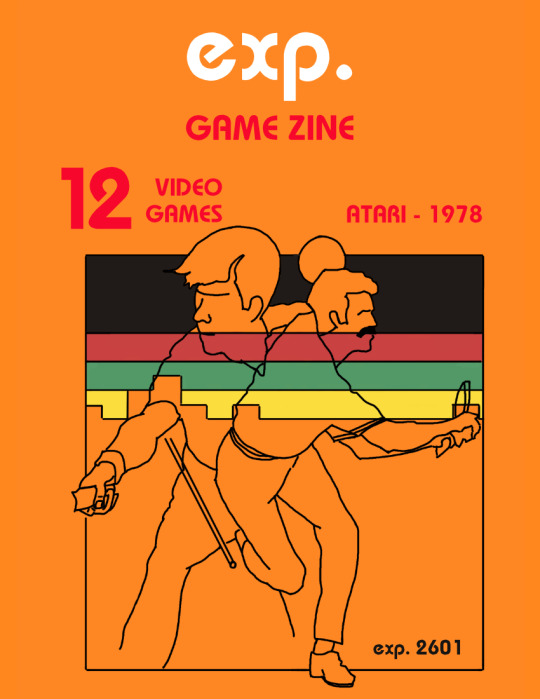

Well, I absolutely did not expect it to take an entire year from exp. 2600 to the next issue, but such is life, honestly. Either way I'm terrifically pleased to announce that exp. 2601 will be debuting this weekend as part of Spring Online Canzine 2024, Canada's premiere zine festival running April 13th to 21st.
This issue covers the eleven games released for the Atari 2600 in 1978, with essays on Space Invaders and the year 1978 to provide context. Even if you're not particularly interested in the Atari 2600, I think there's a lot in here for anyone interested in video games and their history, so I hope you'll check it out.
As with the first issue, exp. 2601 is being published in a signed, numbered limited edition of 52 and I'm also making it available as a PDF and ebook for people who don't want a little object, but still want something to read on an iPad or a Kindle with a bit more focus than they'd give to a webpage.
I am opening pre-orders here today, in advance of Canzine, so I can announce the issue with enough time to ensure subscribers know about it and are aware that they automatically receive 35% off in our ko-fi shop (including on new issues.) It's just $1 per month to become a subscriber, and you'll also get new articles a week early (as well as regular exclusive articles.) Physical copies will be sent out in the last week of April, with digital copies arriving as soon as Canzine begins.

In addition, and not to bury the lede here, for the first time since 2020 my ebook collecting the best of the original run of exp., exp. negatives, is also available for pre-order today, and will be on sale during, and only during, Spring Online Canzine 2024 (to reiterate: April 13th-21st).
If you don't have any of my available digital publications (exp. 2600, 2601, and negatives) I have also made a bundle of all three available for pre-order with a $2 discount for all (and if you're a subscriber, that stacks with your discount!)
I'd like to thank everyone reading this for their support across the years and let you know that there are more exciting things in the pipeline for exp. this year. Did you know it's been ten years since I started Every Game I've Finished? That fact might become important...
4 notes
·
View notes
Text

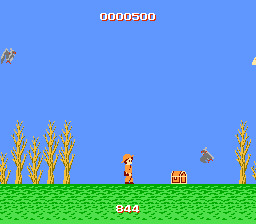
Atlantis No Nazo
Developed/Published by: Sunsoft
Released: 17/04/1986
Completed: 01/02/2024
Completion: Finished it via the quickest route.
Everything changed for gaming in September 1985 with the release of Super Mario Bros. in Japan. The design hegemony of Xevious and The Tower of Druaga was no longer the only game in town, and now Japanese designers needed to do more than just make power-ups invisible or hide progression behind obscure actions (though they’ll still do that, even Nintendo just have.)
But Super Mario Bros., what’s the key feature that you can rip off to make sure your game is a success? Is it tight action? No, not that, I mean the original Super Mario Bros. isn’t that tight. Oh, I’ve got it!
It’s warps. Warp zones. Get as many of those in your game as possible and you’re sorted.
I joke, but this does seem to have been the mindset of Japanese game designers as soon as they were tasked with making the “next Super Mario Bros.” with 1986 seeing releases like Atlantis No Nazo, Mighty Bomb Jack, Milon’s Secret Castle and more, all of which make warping around a key feature. What’s interesting is how little research into warp zones as a game feature exists online. Being able to “skip” levels has existed since Atari’s “SkillStep” system with Tempest–does that count as a warp, or does a warp need to be found during gameplay? With what I have to hand here I seem forced to conclude that Super Mario Bros. was actually the first to do it–but I’m not sure if I’m fully convinced.
Anyway, hot out the gates in spring 1986 Sunsoft release (in their own words) “The Game That Surpassed Super Mario” Atlantis No Nazo, which translates as “The Mystery of Atlantis.” (Lotta mystery in April ‘86, I guess.) Featuring 100 levels that are explicitly called “zones” the player takes the role of Wynn, an amateur adventurer/casino developer (I assume) who heads to rescue his missing master from the recently re-emerged island of Atlantis with nothing but an infinite supply of dynamite that causes tiny, crappy explosions (slowly) and a weird floaty jump with next to no air control.
The first thing you’re going to notice about Atlantis No Nazo is it… well, it’s immediately crappy. The controls aren’t great, the graphics are weak even for the era (and never, at any point, feel “Atlantean”) and the level design has you bumping your head off the ceiling from literally the second level. I mean the second level–sorry, zone–is so immediately bad I wasn’t sure it was possible to complete–a monotonous trudge through what seems to be a loop of the same area avoiding snails that take an age to kill. When I finally saw that there is a door in it to the next zone, I was almost surprised.
The second thing you learn about Atlantis No Nazo is that unlike Super Mario Bros. you can’t just play it beginning to end. You quickly begin warping around, and if you’re just trying to beat it by playing as much of it as possible, to enjoy all that lovely ~content~ you are not playing it correctly at all. The goal of Atlantis No Nazo is to play as little of it as possible. You’re trying to find the most efficient way to the end of the game by learning which door gets you where and hoping each time it’s “really far through the game.”
The lessons of The Tower of Druaga remain vital here, because the quickest way through the game is to find all the hidden warps and doors. Throw yourself into the right pit? That’s a warp. Throw a bomb at the right place? That’s a warp. Kill yourself in the right position? You better believe that’s a warp.
Something like The Tower of Druaga has a kind of predictability, admittedly. You have to chew through the entire thing in order, so you know at X level, you need to do Y stupid thing. With Atlantis No Nazo… I almost pity the people who had to map this out, seven lives and no continues at a time. With a hundred levels and countless warps back and forward, any map of the game is a hilarious spaghetti, and there are so many amusingly cruel twists, like levels with no light (so you need to make sure you hit a level where you can get a lamp power-up from first) and levels that just throw you unavoidably to your death over and over–which I really want to believe are inspired by Jet Set Willy’s “Entrance to Hades” but probably aren’t.
As with The Tower of Druaga, I can’t really imagine anyone trying to brute force this game on their own, not least because the final level seems basically impossible without an invincibility power-up that requires you get to the end in one life. I’m sure at the time everyone just bought a guidebook, and once you have one to hand the game goes from “baffling spaghetti” to “execute your plan perfectly.”
The funny thing is, I had quite a bit of fun trying to do that. Don’t get me wrong. The controls are bad. But I became interested in trying to get the “smart bomb” power-up which requires playing level 2 literally perfectly, and I got into it. Of course, I found it hard because I hadn’t realised you could run past the snails when they were under their shells, but I still enjoyed the challenge, and then using that practice to get to the end of the game in one life via the path that takes less than ten levels… it was like signing up for one of those courses where you get to be a racecar driver for a day, but it’s actually a “be a speedrunner for a day” course. You’re never actually going to be a speedrunner, but it feels like you are, for a bit.
So, you know, I enjoyed Atlantis No Nazo once I “got” what you’re supposed to do with it (learn how to play it and then follow a guide book). I don’t think that’s actually… good, but it’s something!
Will I ever play it again? If this was an arcade game, now I know the path I’d definitely try and do it to show off. At home, I’m good.
Final Thought: Atlantis No Nazo is legendary enough to be the challenge in the first “real” episode of Game Center CX, and it was rather pleasant to give the episode a rewatch after finishing the game. You really shouldn’t bother playing this, but you should watch the episode, if you can find it!
Support Every Game I’ve Finished on ko-fi! You can pick up a digital copy of exp. 2600, a zine featuring all-exclusive writing at my shop, or join as a supporter at just $1 a month and get articles like this a week early.
#gaming#video games#games#txt#text#review#nintendo#nintendo switch#atlantis no nazo#kusoge#famicom#nes#1986#sunsoft
4 notes
·
View notes
Text
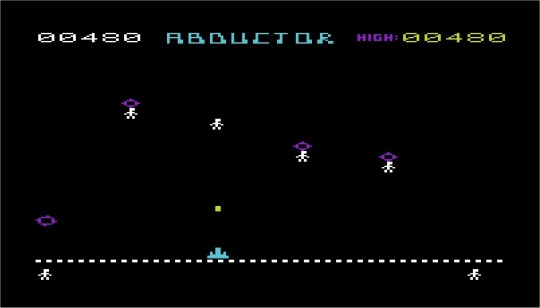
Turbo Deflex / Abductor / Rox 64 (Llamasoft: The Jeff Minter Story)
This post, in which I write about 3 games in Llamasoft: The Jeff Minter Story’s second section is for subscribers only! You can subscribe for just $1 a month at https://ko-fi.com/mathewkumar, but if you don’t fancy that, you can read or re-read my review of the release as a whole. And don’t forget there’s years of articles in our archive.
#gaming#video games#games#txt#text#review#nintendo switch#llamasoft#llamasoft: the jeff minter story#turbo deflex#abductor#rox64
0 notes
Text

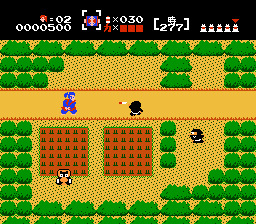
The Mysterious Murasame Castle
Developed/Published by: Nintendo R&D4, Human Entertainment / Nintendo
Released: 14/04/1986
Completed: 31/01/2024
Completion: Finished it (with quicksaves at the start of levels and before bosses.)
1986 is a huge year for Nintendo. They released the NES in North America at the tail end of 1985 and will launch it in Europe by the end of 1986. After nearly 3 years of spotty releases and arcade ports an avalanche of games are going to start showing up. But most fascinatingly, as they begin to conquer the world, they take a massive right turn in Japan by releasing the Famicom Disk System in February.
I assume that even if you’re not a scholar of video game history, if you’re reading this you already know all about the system, but in précis, Nintendo made a business decision. The Famicom was successful; producing cartridges was expensive. Retailers and consumers wanted cheaper games. Nintendo hadn’t created a licensing scheme for the Famicom (as they would for NES) so they weren’t seeing any sweet, sweet fees either. Seemingly, a floppy disk add-on solved all those problems, while also allowing games to be larger, have more sound channels, and include saving.
You can debate the success of this business decision. They sold 4.4 million of them by 1990, and the hardware pushed their game design forward leaps and bounds. But it seemed to come at the exact wrong time. Within four months of launch cartridge games were being released with larger capacities than the disks offered. Saving becomes available on carts; newer and better mapper chips meant games on the disk system were stuck in the past. It was simply a technological dead end. The first original game to released for it would be The Legend of Zelda, and by the time of its release in North America not quite a year and a half later it would be on cartridge without any major concessions.
Interestingly, though, the second original game to be released would be Nazo No Murasame Jou, aka “The Mysterious Murasame Castle” which would not be released outside of Japan at all. Why this is I have no idea and can find nothing concrete, because when considered contemporaneously, this is a perfectly successful run-and-gun adventure that feels like an early example of what the system would become known for via companies like Capcom: arcade ports that have been expanded into something more suitable for the home console (think Bionic Commando and that.) Here it’s like someone, noticing that Nintendo had The Legend of Zelda engine lying around, decided that they should make a version of Sega Ninja with it–and in fact, I’m not sure that’s not what they did, considering the SG-1000 version of Sega Ninja has flick-screen scrolling too.
Cast as the samurai Takamaru, you have to make your way through five castles by first fighting your way through their castle grounds (taking one or two maps) and then the castle interior (one more map.) You do this by melee combat (which tends to kill everything in one hit) or throwing projectiles (which tends not to.) Movement feels very much like The Legend of Zelda, including very boxy collision detection. The maps, too are like The Legend of Zelda dungeons, but not exactly: you travel about them in a non-linear fashion and have to pick up certain power-ups to advance (sandals, for example, that allow you to travel over water) but you’re not really ever forced to fight any enemies, and most power-ups follow the Xevious system of just being invisible and you have to shoot where they are to get them (thankfully, they’re predictable once you’ve found them).
While I can’t guarantee this was inspired by Sega Ninja, it’s very much like it in one respect. The Mysterious Murasame Castle is relentless. Multi-colored ninjas are throwing themselves on the screen constantly, and if you stop moving or stop attacking you’re dead–it really is that simple. Most of the game is played trying to get off screen as quickly as possible and working out the optimum route through the castle–it’s almost a racing game in that respect.
It is very hard. Not impossible, but made, er, impossible-adjacent by how strict it is. You can only take three hits, health restoring items are rare (and invisible) and and every time you die you lose everything (but you do start on the screen you just died on–and you can backtrack to try and get some power back, so that’s nice.) While it feels stupidly difficult for 2024, I can imagine how for the right kind of player in 1986 this was the straight razor compared to The Legend of Zelda’s, uh… quill pen. Play a hard action game surviving and mapping out the levels, learning new things, new efficiencies every time rather than doodling about. It feels perfect, actually, for the American audience of the era, which makes its absence all the more puzzling–I suspect that the setting was considered “too Japanese” and reskinning it felt like too much work, the kind of thing that kept Ninja JaJaMaru-kun stuck in Japan too.
Now, there are some absolutely brutal skill checks in this that I can only see as requiring you reset the system every time you die (most notably the last few bosses) that just make it feel old-school cruel, but I had a fairly decent time trying see how far I could get “for real” once I’d learned the maps (not very far, it turns out.) And I still enjoyed the challenge of this even letting myself do some judicious quick-saving. This isn’t the great leap forward for design that The Legend of Zelda was, but it sort of offers an interesting counterpoint–would games look completely different if Nintendo decided this was the one to get released in the west instead of Zelda?
Probably not actually.
Will I ever play it again? It’s fun, but it’s too hard. Probably not on this one too.
Final Thought: Nintendo really haven’t returned to this one very much. It’s not a complete black sheep, getting a GBA re-issue and (bizarrely) a 3DS release in Europe and Australia, but one of the strangest has to be that in Samurai Warriors 3 for Wii (Nintendo published in the west but otherwise a Koei game through and through) Nintendo EAD made an entire “Murasame castle mode” which is a remake in the Musou style. That’s an even odder decision than not releasing this in the west in the first place.
Support Every Game I’ve Finished on ko-fi! You can pick up a digital copy of exp. 2600, a zine featuring all-exclusive writing at my shop, or join as a supporter at just $1 a month and get articles like this a week early.
#gaming#video games#games#txt#text#review#nintendo#nintendo switch#the mysterious murasame castle#nintendo r&d4#human entertainment#famicom#famicom disk system#1986
3 notes
·
View notes
Text
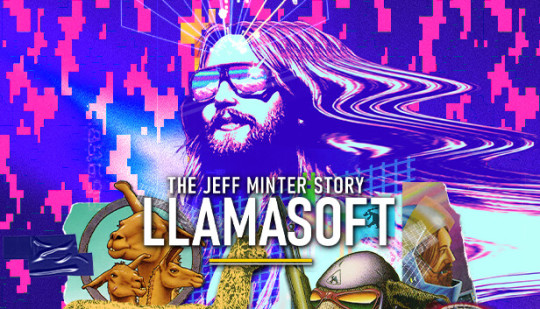

Llamasoft: The Jeff Minter Story
Developed/Published by: Jeff Minter, Digital Eclipse / Digital Eclipse
Released: 13/04/2024
Completed: n/a
Completion: Played and viewed all of “The Early Years” and part way through "The Hairy Years" and still digging into the rest of it.
I know, I can’t believe it either. Every Game I’ve Finished topical for two weeks and even posting a write up of a game on its day of release (well, for supporters, anyway). It’s like I’m a games journalist again (spit).
I was hugely excited for this after enjoying what I’ve played of Atari 50 (better than those flashback collections!) and The Making of Karateka, and although this is absolutely, 100% not what I would choose to put out if I was attempting to be commercial after The Making of Karateka, I’ve gotta say… fair play to them. Though they’re pretty much nailing their flag in the terrain that says the Gold Master Series is not so much The Criterion Collection of games as it is like… Vinegar Syndrome or something. I mean there’s nothing wrong with that! Someone’s gotta put out deluxe versions of Bruno Mattei films [checks notes] oh hang on, no.
(To be fair, it’s actually a lot more like my buddy Justin’s boutique label Gold Ninja Video, which actually does insane work to put out work by filmmakers who should absolutely be known better.)
Anyway. They say there’s a stonking 42 games on this, but that’s a slight exaggeration because there’s technically on 33 different games with a few offering different versions based on system (Gridrunner, for example, is on VIC-20, C64, Atari 8-bit and as a remastered version) and most of the games are pre-1985 so there’s a lot of stuff here that’s really only going to be of interest if you like diving into some very dusty cupboards. This is something I honestly enjoy very much, so I loved pulling out a VIC-20 game and trying to make sense of it, but for many, I assume, the main draw here is the fact that it’s a proper re-release of his beloved Tempest 2000, a well that Minter has been back to a bunch of times–I loved TxK to pieces. It’s a slight bummer that this doesn’t re-release Minter’s more recent games which have been delisted like the iOS “Minotaur Project” (of which only a couple of games have been re-released as Minotaur Arcade.) However, it seems pretty obvious that would be a ton of fucking work to port, as would, say, getting a Nuon emulator up to spec so people could play Tempest 3000, so that's... fine.
(There’s also no Defender 2000, but that’s rights issues, and as far as I remember people don’t think that’s any great shakes.)
Presentation-wise, you know what to expect with this release, the same wrapper as in Atari 50 and The Making of Karateka with some different colours and music. This is fine! I think I’ve settled into this three releases in. You get a ton of interesting images, details, and box art to look at, though I still have issues with the layout of the documentary/museum (I can't remember which terminology Digital Eclipse would prefer.) I have small quibbles: in “The Early Years” if you go through it in order you play a version of Bomber on ZX Spectrum before they introduce the system into the narrative (admittedly the kind of thing you won't spot unless you're brutally anal on these kind of things like myself.) Then the final video you watch recaps everything you’ve just learned in a way that makes you feel like it should either have come first, or been split up into more videos.
But I’d argue there’s deeper structural issues if you’re really trying to get people excited about video game history, and I again place it at the decision to go pure chronological* (as I did in The Making of Karateka.) If you play each game as you go, you’ll play a series of games so old and so ropey that you have to already be interested in this story to see it out. If you don’t know why you should care about Jeff Minter, I’m sorry, but a video of some talking heads and then immediately playing 3D3D, a baffling and slow first person maze game for ZX81 that has literally no analogue in the entire rest of his career is… not going to help! And I have to again bang on that I feel they just don’t place the games in enough context of the wider games industry at the time.
(*There's a quirk in that it's not exactly chronological, because all the Atari 8-bit ports are later in the documentary, which is a bit weird when you, for example, play two versions of Gridrunner and then the Atari 8-bit version several games later. I'm unclear on the exact reason if it, and if you're going to be even that irreverent, feels like you might want to just wildly reorder the whole thing for the audience anyway.)
I think Digital Eclipse’s counter overall would be that I probably want something more verbose and detailed which wouldn’t be as accessible, which isn't wrong. They might even argue that I'm basing my criticism on a hypothetical consumer who isn't even their intended audience! It's a hard line to ride, but I’d still argue that there’s a sense for storytelling in the curation here that’s missing--and I really don't want them to limit their audience because as critical as I might be, I love this series already and I want it to go on forever.
So yes, this is still the exact kind of thing I want to be released and if it’s opening up people to learning more about Jeff Minter and Llamasoft on their own time then I think it’s brilliant. I just think that anyone who picks this up who isn't already steeped in this era needs to be a bit forgiving and skip past all the ropey old games after looking at them for a couple of minutes tops and just enjoy reading the text and watching the videos until they get to the good stuff, so consider this fair warning before you buy it (because you should buy it.)
I mean if you only want this to play Tempest 2000 (and Llamatron 2112, actually) there’s nowt wrong with that, and that’s already worth the money.
Will I ever play it again? I’m still working through it!
Final Thought: I will, of course, be playing every game on this, and although I won’t be giving every Llamasoft release a full post, I have at least started with a write-up of each of the games in "The Early Years", as an introduction to the kind of things you’d be playing if you pick this up (and which sadly explains why you probably won’t want to play most of them... it gets better by the time you get to The Hairy Years, and significantly). If you want to read it, it's a supporter-only post over at my ko-fi. I suppose saying that makes my usual please subscribe stinger a bit pointless but let's hammer the point home why not.
Support Every Game I’ve Finished on ko-fi! You can pick up a digital copy of exp. 2600, a zine featuring all-exclusive writing at my shop, or join as a supporter at just $1 a month and get articles like this a week early.
#gaming#video games#games#txt#text#review#nintendo#nintendo switch#llamasoft#llamasoft: the jeff minter story#jeff minter#digital eclipse#gold master series
1 note
·
View note
Text

Llamasoft: The Jeff Minter Story - "The Early Years"
This post, in which I write about all 8 games in Llamasoft: The Jeff Minter Story's first section, including write-ups on 3D3D, Deflex V, Andes Attack and more, is for subscribers only! You can subscribe for just $1 a month at https://ko-fi.com/mathewkumar, but if you don’t fancy that, you can just wait for my review of the release as a whole to show up next week. And don’t forget there’s years of articles in our archive.
#gaming#video games#games#txt#text#review#nintendo#nintendo switch#llamasoft#jeff minter#digital eclipse#2024
0 notes
Text

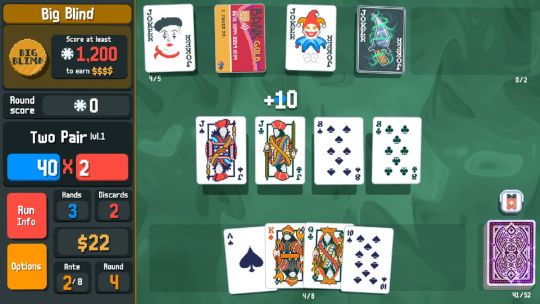
Balatro
Developed/Published by: LocalThunk / PlayStack
Released: 20/02/2024
Completed: 22/02/2024
Completion: Finished it with the blue deck, then with the red deck… then with the yellow deck…
Balatro is the first game in a long time that I’ve picked up on a whim. I saw a screenshot (Wario64 posting a deal on it, actually) and it just… chimed. It looked like a screenshot of an Amiga poker game in a magazine, and on discovering it was a Roguelike-like deckbuilder, I thought, “well, I’m always game for one of those.”
As usual, I fell into this completely, playing it to the exclusion of all else, until I felt like I’d “solved” it in as much as I worked out a strategy that worked well enough for me that I doubted I’d spend time looking for others.
After which I still played it to completion one more time. But I’ve definitely gone cold turkey now!!!
Balatro is very, very good. To explain it: It is a Roguelike-like deckbuilder that unlike Cobalt Core, doesn’t slavishly follow the template of Slay The Spire. It’s more like Luck Be A Landlord, really, in that it takes something that previously existed (in this case, poker) and bends it into something largely unrecognisable.
The idea here is really quite unlike poker, to be honest, outside of the fact that you are trying to make up to five card poker hands. For one, you have your own deck, you draw eight cards at a time, and then have a limited number of hands to make scoring poker hands to beat a set amount of chips, with the twist that cards grant differing numbers of chips based on their rank, with poker hands conferring more chips and a multiplier. You also have a limited number of discards in which you can discard up to five cards at a time.
So the idea is, basically, play the poker hand that gets you the most chips and multiplier each time, using discards to savvily maximise your chances of that. But more interestingly, you can also have up to 5 jokers on the table, who provide you wildly differing bonuses. As simple as “gain multiplier for playing a pair” but also more esoteric possibilities, like gaining a bonus for keeping kings in your hand, or even allowing straights to use non-consecutive numbers!
And then there’s also the fact that after every win, you get some money (disconnected from chips, sensibly for the design, weird for the metaphor) to visit a shop and buy cards. These can either add cards to your deck, or change the benefits of particular poker hands, or change the cards in your deck. You can turn a 3 of spades into another king of hearts, let’s say. Or make a card give you a multiplier, or even just turn it into a bit of stone that gives you 50 chips every time you play it (but won’t ever be able to help you score higher on flushes or straights… well unless you get that joker that lets you score flushes or straights with four cards instead of five?)
It’s complicated, and it’s going to take a while to get comfortable with, but once you do, it’s utterly captivating. It’s genius because it breaks the first thing you learn playing a Slay The Spire-like: you start with a 52 card deck, so trying to get your deck small and efficient by destroying cards isn’t going to be possible (I’ve never managed to kill more than 10 cards on a run) and not only that removing cards at random can seriously damage your chance of scoring straights! It instead becomes a matter of working out how to make the deck you have efficient by changing cards and shaping your success via joker modifiers.
There’s also a beautiful spot of risk reward in the design in that there’s no dungeon map or anything, so no chance for bonus granting events. Balatro boils those events down to “oh, you’re just skipping a battle for a bonus” and each “ante” (three games with progressively high scores to beat) you can skip one or both of the first two games to get a bonus. Maybe it’s to immediately add some cards to your deck, or to add a special joker to the next store. In some cases, it’s “ah, I’ll skip this, because I need these cards anyway and don’t have money.” In other cases it’s “oh, if I skip this, it’s a gamble, because my deck might not be good enough to beat the next game, but the reward is so high…”
It’s a bit of genius that adds another layer to the player’s decision making without being overwhelming, and it might be my favourite bit of the design to be honest.
The issue with Balatro, is, ultimately like the issue with most of these kinds of games. After you play it for a while, you find the way to play it that, as far as you can tell, is the optimum way to play it. When I think of Slay The Spire or Cobalt Core, it’s “defense!” with Balatro, for me at least, it seems to be “Flushes!”
(In a 52 card deck, you only have 4 of any one card, but you also only have 4 suits. So it’s far easier to try and reduce the number of cards of a different suit you draw by changing cards suits/destroying “wrong” suit cards than to try and make more aces or anything.)
In addition, while the game does have different classes of decks, they don’t change the deck pool at all, and the more you play the more jokers and card you unlock, which may open up new combos, but it also makes combo you know seem harder to manufacture, and there’s a sense that you could end up with the same issue that I found with Luck Be A Landlord–that it becomes hard to hit a combo early and get to that point where you have an engine whirring away often enough that you’re having fun.
These issues, however, don’t really diminish what a triumph Balatro was for the time I spent playing it. It looks great (although the constantly moving pixels did make my eyes sort of hurt? I wish you could turn that off) and it does do something unique in a space that’s arguably got a bit samey, so it comes highly recommended.
Will I ever play it again? God I really want to actually. But I won’t. Probably.
Final Thought: Something I haven’t mentioned though is that even without unlocking all the jokers, the RNG in Balatro can be absolutely brutal. There’s another unique touch here that every ante’s “boss” gives a unique modifier to the game, and some are a nightmare–for example the one that makes every single card draw face down! (There’s a trick in that the game still presents hands in suit or rank order, though…) And this means that sometimes you’re just going to hit something that is unwinnable unless you made very different decisions significantly earlier (oh you built a deck full of clubs? Too bad, this boss debuffs your entire deck. And don’t get me started on the one that permanently levels your hands down, basically that fucking poison swamp from Shiren…) With huge decks, there’s a bit more frustration here I’d say when you feel like you didn’t manage to get anywhere (or did, and just got screwed) and I suspect it only gets worse on higher difficulties. So like the rest of these kinds of things I’d say: play it as long as you enjoy it, and not a second more.
Support Every Game I’ve Finished on ko-fi! You can pick up a digital copy of exp. 2600, a zine featuring all-exclusive writing at my shop, or join as a supporter at just $1 a month and get articles like this a week early.
1 note
·
View note
Text
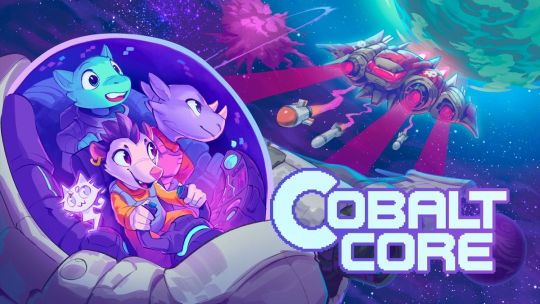

Cobalt Core
Developed/Published by: Rocket Rat Games / Brace Yourself Games
Released: 08/11/2023
Completed: 17/01/2024
Completion: I’ve beaten it six times including once without using the starting three characters.
Slay The Spire is great, isn’t it? I mean you could basically play it forever. Except… I stopped because I felt like–at least for me–I had to play it focusing on defense, and after beating it a few times it just started to feel samey. With well over a year since I last touched it I’m wondering if I was being a bit unfair on it–I mean I played it for so long it’s like those Steam review that are like “140 hours, I got bored, 1 star”. But let’s imagine there was a roguelike-like deckbuilder where you could dodge instead of just putting it all into block.
Hang on!!! We don’t have to imagine! Because here’s Cobalt Core!
Cobalt Core takes Slay The Spire’s metagame–by which I mean the entire thing where you do three branching levels experiencing events, fighting normal enemies and bosses and collecting or removing cards from your deck and getting passive powers via artifacts and that–exactly and throws it onto an actually rather more complex card game set up. Instead of selecting one character, you now select three (each with their own selection of cards) and a space ship (which provides its own playstyle quirks) and then in each battle you’ve got more to think about than just playing your cards. You also have to think about your ship’s positioning, because you can move it to either avoid damage or make sure that you’re hitting your opponent. Actually I suppose you still do that by playing cards.
This is a really fun change, and it also makes things even more complex than they already were. Not only do you now need to think about how much damage you’re putting out on a turn and how much defense (in this case, shields), you now need to think about how much movement your are gaining, or spending, and where that means your ship will be or needs to be. And in turn you do this with a deck that’s made up of cards from three characters whose abilities can be wildly different making adding new cards to your deck a minefield of potential combos and non-bos.
To start with, it’s totally overwhelming, with every screen packed with information. Then it suddenly clicks (probably quicker, much quicker, if you’re an old hand with Slay The Spire) and it becomes super fun. You feel powerful, in control and it starts to feel a bit… easy?
Then you pick a new character and it’s frustrating and confusing again. Then it’s fun! And… a bit easy?
Basically, you’ll continue this loop as long as you like, and something nice about the game is that it’s not particularly bothered about you playing it on progressively harder difficulties or anything (unless you really want an achievement or whatever) so you actually can choose a level where it’s not as easy, or you can just not bother.
Where it falls down a bit for me is that it’s got a really cute narrative with excellently written characters, and I liked it a lot, but to unlock the “true” ending you have to beat the game 18 times. It’s simply… too many times! Being able to do it on the easiest difficulty helps, I guess, but then that just ends up being a grind, and if you’re like me and played the game multiple times over with one character failing every time till you got a handle on them/got the right drops, that means a lot of time spent playing this. And the more I played it the more I felt like I hit the same issue I had with Slay The Spire. The game makes healing so rare that even though you can move to avoid getting hit, it’s still so hard to avoid getting hit you still need to put a lot of focus on defense. To the point that the character with defense is probably the best one in the game (and the one with movement is a close second.) So I guess the change here wasn’t enough, and just like Slay The Spire I started to find this too samey.
But just like Slay The Spire you’ll play this for so long until you find it samey that it positively feels churlish to say so. If you can get through the initial complexity you’ll have a great time. Just don’t feel you need to see the true ending, I guess.
Will I ever play it again? Well, after I wrote most of this I actually decided I fancied seeing if I could beat this on the hardest difficulty, and after a couple of runs I did and I had fun as well! So there’s something still oddly moreish about this, even though I’m intent to put it down for good.
Final Thought: Something I must say is that it may simply be in the nature of these kinds of roguelike-likes that you will always have to concentrate on defense somewhat because a single death is, well, the end of the game. It’s like how if you chose to play Doom or whatever with a single life suddenly the way you play it changes completely. In basically everything else I love to play glass cannons–games where you die and reload–and it may simply be a case of horses for courses. Every time I have to choose a boring-ass card with shields on it rather than the one that’s like “do loads of damage” I slightly die inside, but maybe that’s not you. Maybe you’re boring!!! I mean… maybe my complaint doesn’t hold water with you because you accept that bit of the design.
Support Every Game I’ve Finished on ko-fi! You can pick up a digital copy of exp. 2600, a zine featuring all-exclusive writing at my shop, or join as a supporter at just $1 a month and get articles like this a week early.
2 notes
·
View notes
Text

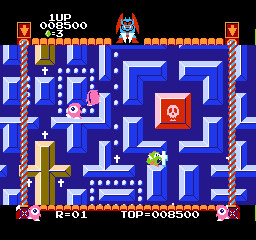
Devil World (Famicom)
Developed/Published by: Nintendo R&D1, Intelligent Systems / Nintendo
Released: 05/10/1984
Completed: 18/01/2024
Completion: Saw all the levels (there’s only three.)
I’m not sure I can think of a company as venerated as Nintendo. A company that’s ultimately considered peerless–a promise of reliability, of quality, but with a mystique that somehow makes it all impossible to duplicate. While it’s made mistakes, they’ve always been mistakes that only Nintendo could have made. We might buy Apple products, or use Google, but even if we liked what they did at one point, we’re by now tired of the greed, the privacy violations, the churn of samey products, the enshittification. It’s hard to tell anyone apart. But not Nintendo. They stand alone.
Which I suppose is why it’s nice to go back and play these old games and see that just like everyone else Nintendo basically has no idea what they’re fucking doing. I mean, this. Devil World. Made with the gay abandon that only Asian developers can have about western religious iconography, it takes Pac-Man (sort of, more on that in a minute) and throws in random auto-scrolling and the need to collect crosses and bibles to survive while the devil dances at the top of the screen like he's in Haxan. It’s textbook weird and I’m sure it’s been in all sorts of Angry Video Game Nerd or Seanbaby-type videos but I’m not looking them up and neither should you.
There’s two things that are crazy about this. One, it’s that it’s apparently the first Famicom game that Shigeru Miyamoto directed. It’s a pretty early original title for the system (outside of sports titles) and it strikes me to what extent that even after Donkey Kong Miyamoto was still finding his feet as a designer. In fact, as I subscribe to the theory that Super Mario Bros. is more heavily based on Pac-Land than Miyamoto might admit (“sky colour” my arse) I wonder how much Donkey Kong was inspired by Space Panic, the proto-platformer, and Miyamoto simply “hit” on the tweaks that would make it eternal as he would do with Pac-Land. Here… he is not successful. In fact, the concept just feels sort of… unfinished. Half-arsed.
To put it in more detail: On the first stage of Devil World, you are navigating a fairly small wrap-around maze (a la Flicky) but one that moves in a random* cardinal direction for a random* amount of time, meaning you can get squished between walls and the edge of the screen. There are monsters that move around the maze (but who don’t seem especially bothered about chasing you, at least to begin with) who kill you on touch, but you can kill those by collecting a cross and firing a fireball at them. The cross, also, is the only way to collect the dots around the maze. It runs out after a set amount of time and then you have to collect another (though there’s a bunch around the level, and they don’t run out.)
*There may be some system to this, but I never worked it out.
On the second stage, you’re still avoiding the monsters and trying not to get squished, but you’re collecting four bibles and taking them back to the central “seal” (think the central ghost box from Pac-Man) to get to the next level.
The third stage is a bonus level with no enemies where you’re trying to collect six bonus boxes before time is up. The level is still scrolling randomly, but there’s some arrows in the level that… allow you to move the direction? Maybe?
Ultimately… none of this works. The random level movement and wall squishes feel, well, random. Having to collect the cross to pick up dots feels arbitrary, and the bible collection is sort of… pointlessly easy? And it’s all rather slow and unresponsive.
It’s possible that these were Miyamoto’s attempts to “level-up” the maze chase game the way adding jumping created the platformer and then when it didn’t work, well… the game had to come out. But maybe it’s also the fault of the second crazy thing about Devil World. Rather absurdly the game’s other designer, Takashi Tezuka, had never heard of Pac-Man. Doesn’t seem like the best foot to get off on when you’re, you know… cloning Pac-Man, to be honest.
Devil World is one of those examples of a game where some people tried something to make something already good better, and everything they did made it significantly worse. Wait… they enshittified Pac-Man… Nintendo aren’t different at all!!!!
Will I ever play it again? It simply isn’t worth the time.
Final Thought: I was honestly very surprised to discover that this was actually released in Europe in mid-1987 despite being not released in the US due to the ol’ religious iconography. Rough for the weans who got a copy of this that late in the game.
Support Every Game I’ve Finished on ko-fi! You can pick up a digital copy of exp. 2600, a zine featuring all-exclusive writing at my shop, or join as a supporter at just $1 a month and get articles like this a week early.
#video games#gaming#games#txt#text#review#nintendo#nintendo switch#famicom#devil world#nintendo r&d1#nes#intelligent systems#1984
3 notes
·
View notes
Text


Punch Club
Developed/Published by: Lazy Bear Games
Released: 01/08/2016
Completed: 22/12/2023
Completion: Beat the main story (but I didn’t finish the Dark Fist bonus storyline.)
I’ve been meaning to play Punch Club for ages, but I’ve always been put off by the fact that every review you read complains bitterly about the fact that the game–a life/combat management simulator–features extremely aggressive stat decay that makes the game quickly an unpleasant grind just to keep your head above water. Well, guess what! This review is going to be no different. I should have listened!
I’ll start with some positives. Punch Club has a great 2D pixel-art look with a decent filter. The game systems make sense basically immediately and are as streamlined as can be. You’ve only got three stats to care about (strength, agility and stamina) and your upgrade trees neatly correspond to one. Working out or working to raise money makes you hungry and tired; you sleep and eat to fix that, but sleep costs you time and eating costs you money. The balancing act makes perfect sense.
The thing is… that stat decay. Now, one of the issues with any of these kinds of simulations is that you are always incentivised to min-max your opening as much as possible, and this game featuring stat decay seems to put that into overdrive. You quickly realise that you have to work out the absolute most efficient way to raise your stats while keeping your character rested and fed because any leeway you might have had is destroyed by every lost day costing your stat growth, allowing you to spiral into what feels like a need to restart as you hit up against opponents you can’t defeat (especially bad if you’re foolish enough to take on an opponent in the illegal fights where you can end up with injuries that make growing stats even harder.)
It’s worth noting that there’s really not a true game over in Punch Club, though. If you screw up completely, you can grind and it’ll just take you longer to beat the game–most opponents give you currency for your upgrade tree, meaning if you go through a long losing period, you should, as long as you can right the ship with stat growth to an even keel with your opponents, eventually out-skill them and defeat them. It’s just not very pleasant.
The game has an interesting take on combat, actually. There are some passive skills, but you select up to five skills that affect if your character is going to punch, kick, guard–or even what kind of punch or kick it is. The problem is that as much as you imagine changing these up between rounds to deal with opponents, because of the way skill trees are set up, and that stat decay means you want to avoid flexibility, you almost alway just have the highest attacks or powers in the skill tree equipped and run the combat at 8x speed because tactics basically don’t matter. You either out-skill and out-power your opponent, or you… don’t.
Punch Club tries to mix this up with the narrative and quests–because otherwise this would be unbelievably repetitive–but those are a mixed bag as well. This is a 80s/90s parody written by a Lithuanian studio with Russian founders, and it has the slight lost-in-translation air you’d expect as a result. The story makes absolutely no sense, and the references are direct to the point of not even really feeling like jokes. But when it comes down to it, that’s probably better than going for some sort of “radical” take on the era. Think how annoying something like Kung Fury is. This is nowhere near that bad, but the game is so relentless that every time it does something like make you travel somewhere just for a cut-scene you think “oh great, now I have to waste 2 ticks of the clock or pay $4 to get the bus back to the gym, thanks for nothing” rather than being that interested in seeing what happens. Things are even worse with the Dark Fist DLC, which does that constantly and culminates with a series of battles you have to do where you have only a chance of winning what you need to progress. I 100% said fuck that.
I didn’t hate Punch Club. Once you get into a rhythm with it, it’s… fine. Sort of pointlessly stressful and ultimately unrewarding though. I couldn’t recommend it.
Will I ever play it again? There are two routes through the game and 3 different fighting styles, and there’s even a no stat decay mode if I just wanted to see the other route. But even with that there’s just so much watching your character fight at 8x speed, or doing a training animation that I can’t imagine it.
Final Thought: For the sequel stat decay has been re-worked into a system where certain skills use “tonus”, a form of MP that is replenished by training, which might be… fine? Very funny to see people complain about the stat decay being removed because it was “realistic” in a game where your character doesn’t have to sleep (always annoys me in a game with a clock when they skip the night phase) and literally eats 5 frozen pizzas in a row to heal after a fight.
Support Every Game I’ve Finished on ko-fi! You can pick up a digital copy of exp. 2600, a zine featuring all-exclusive writing at my shop, or join as a supporter at just $1 a month and get articles like this a week early.
1 note
·
View note
Text
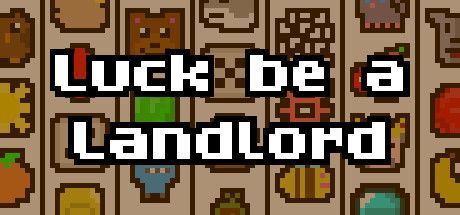

Luck Be A Landlord
Developed/Published by: TrampolineTales
Released: 06/01/2023
Completed: 18/12/2023
Completion: Finished one floor.
Luck Be A Landlord is, at its simplest, a pretty bare-bones “roguelike-like” deck-building take on the slot machine. If you’ve played Slay The Spire or a tabletop originator like Dominion you know what you’re doing here. You start with a slot machine with five symbols on it (and 20 spaces that you will “score” on every time you spin–imagine you’re playing one of those ridiculous modern ones and max betting) and after every spin you add a symbol to fill in another space from a random choice of three–with the idea that you’re trying to construct a collection of symbols (a deck, basically) that are complementary, creating an efficient economic engine.
The pressure here is that you’re doing it to pay your landlord, who, gleefully free of rent controls (thanks Doug Ford) gets to raise your rent every month, requiring your engine to be ever more efficient. As a result, each month you tend to get passive bonuses, some “re-rolls” (allowing you to dump a selection of 3 symbols that you don’t want) and some destroys, allowing you to kill off symbols that have become unprofitable or to simply think your deck so it’s more efficient (as you basically want every symbol you have to come up every time, so you don’t actually want more than 20*).
*Generally. There may be some cases in which you do or there may be some “big deck” builds, but I can’t see them.
Luck Be a Landlord is… fun! In the way a deck builder is, anyway. But interestingly, once I’d managed to complete it once, I was just… done with it. There’s a few reasons for this.
Firstly, there’s really no surprise to the game once you’ve got it. I don’t exactly need a deep narrative, but the game just relies on some text boxes telling you to pay your landlord, and I kind of wanted something more than the grind, and there’s none of that here–the game just ends too, there’s no climax or sense of a win (not even any sense of a sly “the house/capitalism always wins” wink, either.)
Secondly, like a lot of roguelike-like deckbuilders, there’s a huge dose of randomness to your ability to make a successful build, and there is such a huge number of symbols (152) that you can find yourself stuck trying for a build that you actually can’t make because no support ever comes up–or you just didn’t switch tracks fast enough. While a game here is quick enough, it feels easy to be a “dead man walking” for too many rounds as unlike something like Slay The Spire there aren’t any “gear checks”--just a progressive raising of rent. It really feels like something where the game would be enriched a bit by having character classes so it would be less daunting to specialise.
Those two issues are largely enough to make this a one and done for me, even though I did like it!
Will I ever play it again? I feel like I’m damning this with faint praise, but I’d play a more fully featured sequel absolutely. There’s just not enough here to get my teeth into (a second time, anyway.)
Final Thought: And never mind that the slot machine doesn’t even really make sense. You get money for every symbol on every spin and don’t put money in!!!
Support Every Game I’ve Finished on ko-fi! You can pick up a digital copy of exp. 2600, a zine featuring all-exclusive writing at my shop, or join as a supporter at just $1 a month and get articles like this a week early.
0 notes
Text
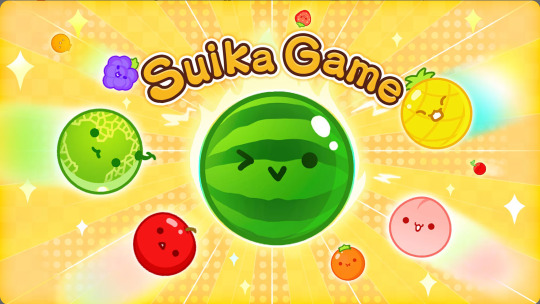

Switch Flash Round: Suika Game
This post is for subscribers only! You can subscribe for just $1 a month at https://ko-fi.com/mathewkumar, but if you don’t fancy that, don’t forget there’s years of articles in our archive.
1 note
·
View note
Text
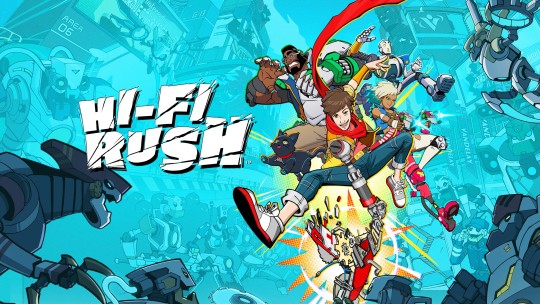

Hi-Fi Rush
Developed/Published by: Tango Gameworks / Bethesda
Released: 25/01/2023
Completed: 09/12/2023
Completion: Finished it!
I loved this.
I’m not quite sure why, but saying so feels very exposing. Maybe it’s because before playing Hi-Fi Rush I had no idea what it actually was, and the game’s bright anime-adjacent stylings somewhat had me discounting it out of hand, so I assume the extremely cool people who read this would be doing the same.
Maybe it’s also just that Hi-Fi Rush is… pretty straightforward? It’s not particularly trying to move the medium forward (although I think it does some clever stuff) it’s just trying to be very, very good at what it’s doing. And what it’s doing, actually, isn’t so much “anime” as “full on Sega blue skies” while being an incredible competent 3D action platformer/brawler with a likable (dare I say loveable) cast of heroic misfits telling a simple but effectively structured narrative with some very savvy music choices.
The thing is that… succeeding at something that hits that many beats isn’t actually… easy? Something I’m most struck by is actually those characters. By now we’ve all seen the nadir of Marvel-inspired quip-a-thons thanks to the likes of that Forsaken trailer, but even looking at something like, say, Guardians of the Galaxy, where they have something that (at least previously) had worked, it’s remarkable how flat it falls. Here, you have a goofy, act-first-think-later hero, Chai, the cleverer-than-him female leader, Peppermint, the funny robot, CNMN, etc. in a very simple “baddies are doing bad things, let’s get the different things we need to defeat them” story, but it completely pops because there’s been care to keep the story rolling naturally so you flow through it and grow into caring about them. I’m so insanely curmugeonly that I can’t believed to ride that line for me. But they did!
Now you could say, “ah, but the secret weapon here is that the game uses actual songs that you actually like! That always works!” But it doesn’t work if all the pieces don’t fit together. There’s no better example than one of the game’s latter levels that uses The Prodigy’s Invaders Must Die. It plays at a moment where narratively all hell is breaking loose. It feels like you’re in a climax of an action movie, not just because the music is playing, but because the story has taken you there. That the level design is clever enough to cool down, let the music pull back a little, and then kick it back in for a climax? Absolute chef kiss.
(It only really gets better from there, too. Ending strong is rarely something I think video games aspire to, but Hi Fi Rush is sensibly around the 10 hour mark and the last three levels or so rip. Did the appearance of The Joy Formidable on the soundtrack literally make me emotional? Yes. Yes it did.)
Now interestingly, I haven’t actually played any other Tango Gameworks titles so I don’t really know if I should have expected rock-solid play, but either way I was surprised by how well it does. What makes Hi Fi Rush genius, I think, is that it takes a type of game I am incapable of not button-mashing through and adds a rhythm action component that doesn’t expect but rather, uh… politely asks you to hit your combos on rhythm. And it works!
I can criticise it, somewhat, however They quickly add quite a lot of subtleties to the combat and don’t tutoralise them heavily enough–I didn’t understand how to use Chai’s “partner combos” until well over half-way through the game, and I don’t know if I ever got comfortable with parries because standing around waiting for enemies to attack seemed the antithesis of everything else I was doing. There end up being a lot of buttons and you have to internalise the order of your partners and switching between them rapidly in situations where there are like 3 different kinds of enemies at once meaning at times combat is just a total stramash. But even then, there’s always the beat to follow. It’s very clever.
Anyway. I loved this. It’s one of my favourite things I’ve played in years. Your mileage may vary!
Will I ever play it again? When it finished I wanted to play it more. That literally never happens. I sort of hope there’s a sequel, but the story of this is so pleasantly complete that I’m not sure if there should be one.
Final Thought: I may also be a bit of a sucker for this game because you’re always accompanied by a black cat. Inspired by the game director’s!
Support Every Game I’ve Finished on ko-fi! You can pick up a digital copy of exp. 2600, a zine featuring all-exclusive writing at my shop, or join as a supporter at just $1 a month and get articles like this a week early.
11 notes
·
View notes